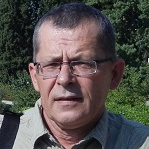Minerals and Solids at High Temperature and High Pressure: Equations of State and Thermodynamics
A special issue of Minerals (ISSN 2075-163X). This special issue belongs to the section "Crystallography and Physical Chemistry of Minerals & Nanominerals".
Deadline for manuscript submissions: closed (13 November 2020) | Viewed by 5504
Special Issue Editors
Interests: equation of state; high pressure high temperature experiments; mineral physics at extreme conditions; elasticity; compressibility; PVT properties; ab initio calculation; phase diagrams
Interests: mantle; high pressures and temperatures; xenoliths; phase transitions; equations of state; oxidation state; experiments
Special Issues, Collections and Topics in MDPI journals
Special Issue Information
Dear Colleagues,
Mineral physics studies provide key knowledge on thermodynamic properties of constituents of the Earth’s and planetary interiors. Equations of state (EoS) remain a resourceful and powerful tool to model and evaluate the thermodynamic behaviors of any physical–chemical system. EoS characterizes the state of matter of a material under a given set of physical conditions and may be used to describe gases, fluids, fluid mixtures, and solids. In mineral physics, an EoS is used to determine how the volume (or density) of a material vary as a function of pressure and temperature. It reflects the atomic structure, chemical bonding, and stability of a material. This information, combined with geophysical and geochemical observations, helps to constrain the structure and dynamics of the Earth and other planets.
This Special Issue aims to include a representative group of experimental and theoretical papers in the field of equations of state and thermodynamic properties of minerals (as well as melts, fluids, and rocks) at high pressures and temperatures.
Dr. Peter I. Dorogokupets
Dr. Anna M. Dymshits
Guest Editors
Manuscript Submission Information
Manuscripts should be submitted online at www.mdpi.com by registering and logging in to this website. Once you are registered, click here to go to the submission form. Manuscripts can be submitted until the deadline. All submissions that pass pre-check are peer-reviewed. Accepted papers will be published continuously in the journal (as soon as accepted) and will be listed together on the special issue website. Research articles, review articles as well as short communications are invited. For planned papers, a title and short abstract (about 100 words) can be sent to the Editorial Office for announcement on this website.
Submitted manuscripts should not have been published previously, nor be under consideration for publication elsewhere (except conference proceedings papers). All manuscripts are thoroughly refereed through a single-blind peer-review process. A guide for authors and other relevant information for submission of manuscripts is available on the Instructions for Authors page. Minerals is an international peer-reviewed open access monthly journal published by MDPI.
Please visit the Instructions for Authors page before submitting a manuscript. The Article Processing Charge (APC) for publication in this open access journal is 2400 CHF (Swiss Francs). Submitted papers should be well formatted and use good English. Authors may use MDPI's English editing service prior to publication or during author revisions.
Keywords
- equation of state
- high pressure high temperature experiments
- mineral physics at extreme conditions
Benefits of Publishing in a Special Issue
- Ease of navigation: Grouping papers by topic helps scholars navigate broad scope journals more efficiently.
- Greater discoverability: Special Issues support the reach and impact of scientific research. Articles in Special Issues are more discoverable and cited more frequently.
- Expansion of research network: Special Issues facilitate connections among authors, fostering scientific collaborations.
- External promotion: Articles in Special Issues are often promoted through the journal's social media, increasing their visibility.
- Reprint: MDPI Books provides the opportunity to republish successful Special Issues in book format, both online and in print.
Further information on MDPI's Special Issue policies can be found here.






